Image gallery
- Summerday at Møns Klint (1855)
- View of Strandmøllen
- View of Nødebo and Lake Esrom
- View of Kronborg Castle
- View of Vesterport in Copenhagen
- View from Nørrevold towards Copenhagen, 1864
Carsten Henrichsen (23 September 1824 - 30 April -1897) was a Danish landscape painter.
Henrichsen was born into a working-class family in Copenhagen in 1824. He attended the Royal Danish Academy of Fine Arts in Copenhagen for plaster modeling from March 1840 until March 1843, but was absent in January 1845; he received drawing instruction from Frederik Ferdinand Helsted from 1845–1849. [1]
From the late 1840s, he created vast number of paintings from Copenhagen and North Zealand. He received the Neuhausen Award in 1855 and a grant from the Academy in 1858.

Christen Schiellerup Købke was a Danish painter, and one of the best-known artists from the Golden Age of Danish Painting.

Peter Christian Thamsen Skovgaard was a Danish national romantic landscape painter. He is one of the main figures associated with the Golden Age of Danish Painting. He is especially known for his large scale portrayals of the Danish landscape.

Johan Thomas Lundbye was a Danish painter and graphic artist, known for his animal and landscape paintings. He was inspired by Niels Laurits Høyen's call to develop nationalistic art through depictions of Denmark's characteristic landscapes; the historical buildings and monuments, and the country's simple, rural people. He became one of his generation's national romantic painters, along with P. C. Skovgaard and Lorenz Frølich, to regularly depict the landscape of Zealand.

Christian August Lorentzen was a Danish painter.

Laurits Andersen Ring was one of the foremost Danish painters of the turn of the 20th century, who pioneered both symbolism and social realism in Denmark. Considered one of the masterpieces of Danish culture, his painting Summer Day by Roskilde Fjord was included in the 2006 Danish Culture Canon.
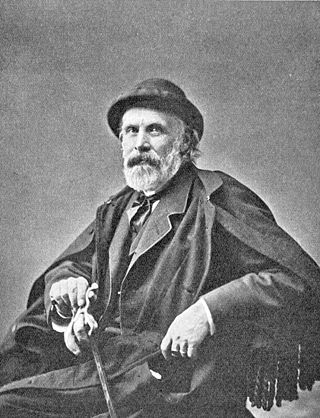
Lorenz Frølich was a Danish painter, illustrator, graphic artist and etcher.

Ejler Andreas Christoffer Jorgensen aka Eiler Jørgensen was a Danish-born American landscape and portrait painter.
Vilhelm Wohlert was a Danish architect. His most notable work was on the Louisiana Museum of Modern Art in Humlebæk, Denmark.
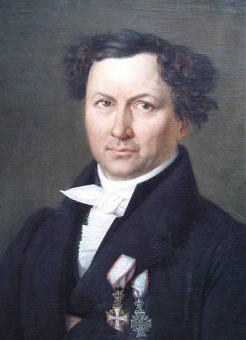
Jørgen Hansen Koch was a Neoclassical Danish architect. He was chief of the national Danish building administration from 1835 and director of the Royal Danish Academy of Fine Arts from 1844 to 1849.
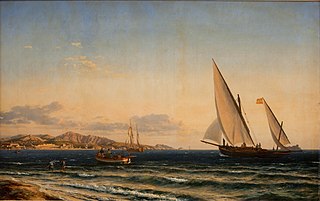
Carl Frederik Emanuel Larsen usually known as Emanuel Larsen was a Danish painter who specialized in marine painting.

Hans Jørgen Hammer was a genre, landscape, and portrait painter and printmaker of the Golden Age of Danish painting. In addition, he served for eleven years as a military officer.

Niels Sigfred Nebelong was a Danish architect who worked in the Historicist style. He was city architect in Copenhagen from 1863 and also designed many lighthouses around Denmark in his capacity as resident architect for the Danish lighthouse authority.
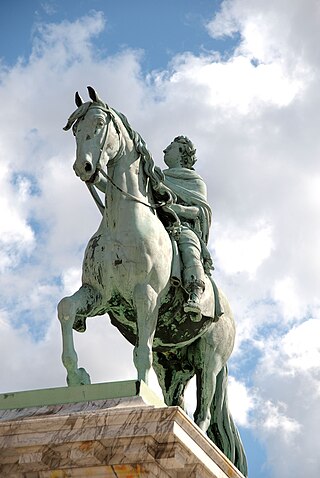
Danish sculpture as a nationally recognized art form can be traced back to 1752 when Jacques Saly was commissioned to execute a statue of King Frederick V of Denmark on horseback. While Bertel Thorvaldsen was undoubtedly the country's most prominent contributor, many other players have produced fine work, especially in the areas of Neoclassicism, Realism, and in Historicism, the latter resulting from growing consciousness of a national identity. More recently, Danish sculpture has been inspired by European trends, especially those from Paris, including Surrealism and Modernism.
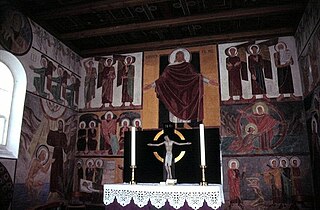
Elof Christian Risebye was a Danish painter. He became known as the "painter of grief" for his paintings of coffins and corpses in the 1930s.
John Olsen was a Danish sculptor, illustrator and painter.

Jens Erik Carl Rasmussen was a Danish painter best known for his marine art and scenes of Greenland.
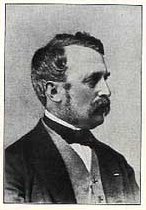
Harald Conrad Stilling was a Danish architect who was active in Copenhagen during the Late Classical period of the mid-18th century. He received the C. F. Hansen Medal in 1841.
Carl Johan Albrecht Løffler was a Danish decorative painter. He died in the 1853 Copenhagen cholera outbreak.
Ghita Johanne Hempel was a Danish painter.

Siegfried Wagner was a Danish sculptor.